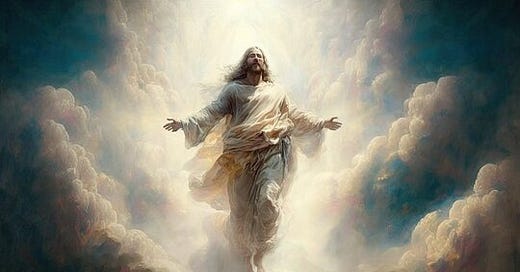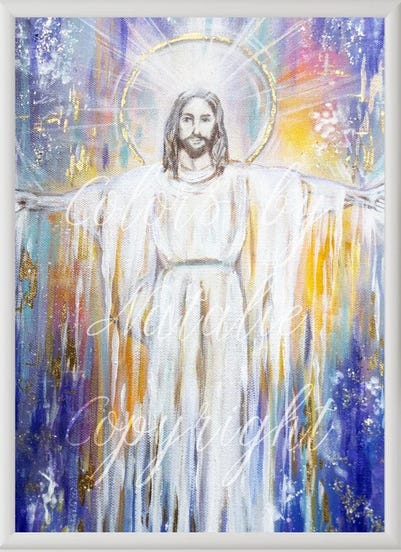Next week we will celebrate the Solemnity of the Ascension of Jesus Christ, when our Lord is lifted to heaven and is seated on His throne at the right hand of the Father, 40 days after His resurrection. The readings are familiar to us, just like those during the Nativity and the Paschal Triduum. It is easy to hear the words proclaimed without giving them much thought. Over the course of the liturgical year, we remember four very important moments involving Jesus’s human body: His birth when God became incarnate, His death and burial, His bodily resurrection, and finally His ascension.
But why did God become flesh anyway? To answer that question we have to go back to the very beginning. When God created Adam and Eve in the Garden of Eden, He intended for them to be one with Him when they ate from the Tree of Life. Instead, Adam and Eve ate from the Tree of Knowledge of Good and Evil because they wanted to be like God. This choice, the meal we now know as original sin, severed their communion with God, separating them, and us, from God and the fullness of life He wished for us. Despite their disobedience, God promised to defeat Satan in the end in Genesis 3:15, thus setting into motion His plan for salvation.
Before He delivered the Israelites out of Egypt, He told the people to prepare themselves with the sacrifice of a lamb and a meal. With the blood of the lamb over their door, they were spared from the tenth plague. The people were saved from their slavery in Egypt but God’s ultimate salvation had not yet come. While they wandered in the desert questioning Him, God reminded the people of His promise with bread, or manna, from Heaven. God still desired communion with the people and they carried His signs with them in the Ark of the Covenant through the desert.
When Jesus delivered the Bread of Life Discourse in John Chapter 6, the feast of the Passover was near. It would not have been lost on His Jewish audience that Jesus was referring to the exodus from Egypt and the manna that had sustained their ancestors in the desert when He said, “I am the living bread that came down from heaven… Whoever eats my flesh and drinks my blood has eternal life.” They had been waiting for the messiah for generations yet this teaching was too difficult to accept. Jesus was not speaking in hyperbole. He did not mean that we must eat His flesh and drink His blood symbolically to remain in Him. Jesus was so serious about this teaching that He let most of his disciples leave. The crowd that had just witnessed the multiplication of the loaves and had asked Jesus to “give us this bread always” just walked away from their messiah and He let them go.
During the Last Supper, Jesus uses the language of the Passover in the Institution of the Eucharist. He is the sacrificial lamb, establishing a new Passover. We are called out of slavery to our sin and into the new promised land, eternal life in Heaven. Jesus became man to give His very flesh as the sacrifice and the meal for our salvation. He became man in order to descend into Hell, defeat Satan, and deliver us all. He was tested in a garden just like Adam. But Jesus is the new Adam. He allowed Himself to be crucified on the cross, the new Tree of Life, and His body in the Eucharist is the fruit through which we receive communion once more with God.
So on this Solemnity of the Ascension when you go to Mass and receive Him in Holy Communion, remember His promise, just as His body ascended into Heaven, it is our hope that one day we too will be brought body and soul into eternal bliss with Him.





